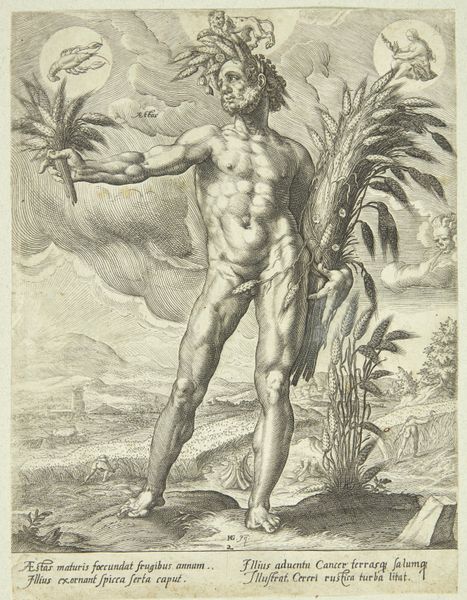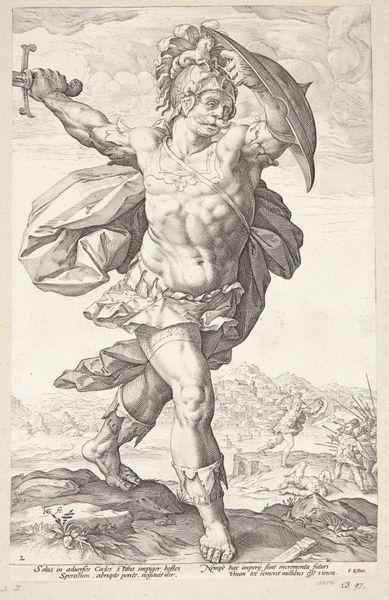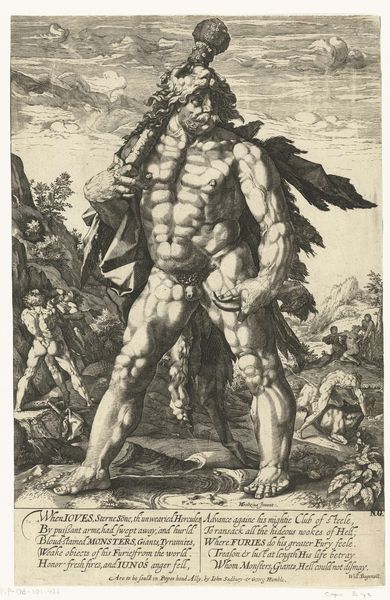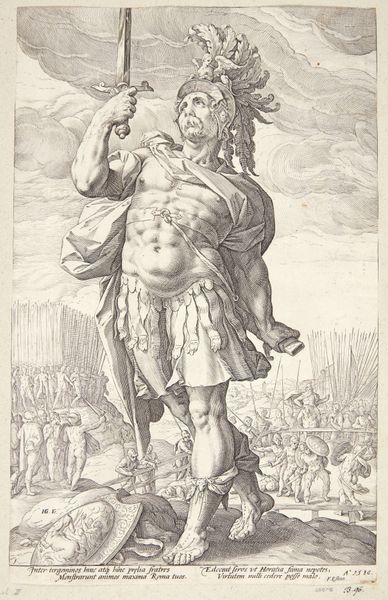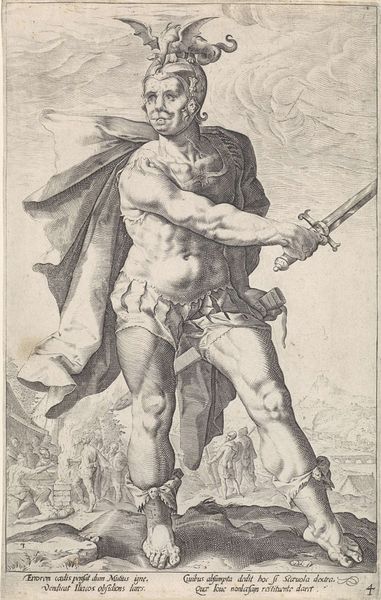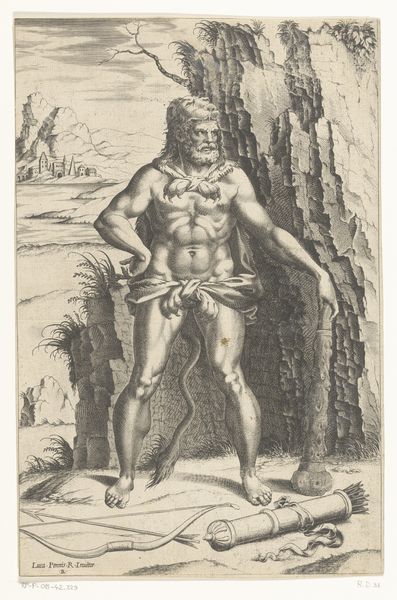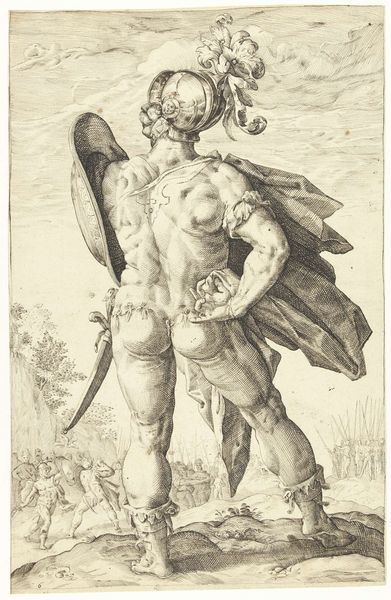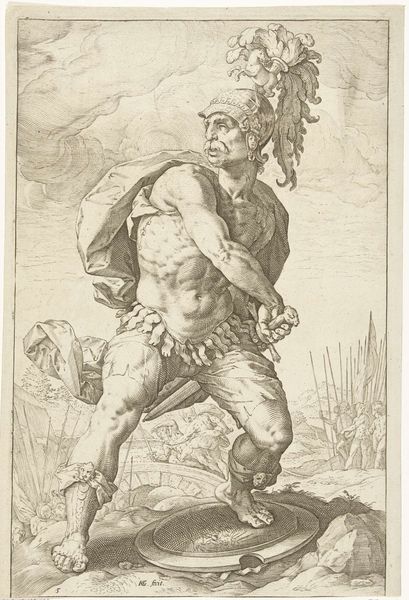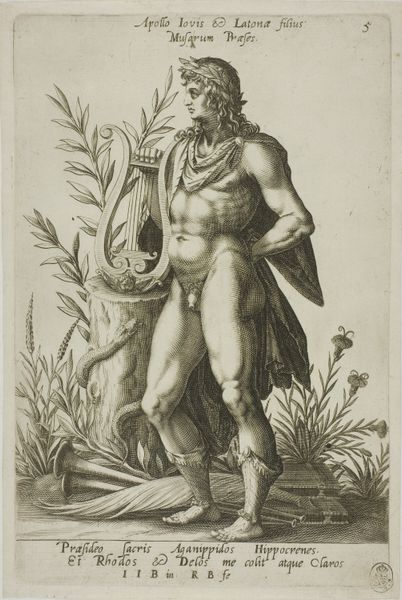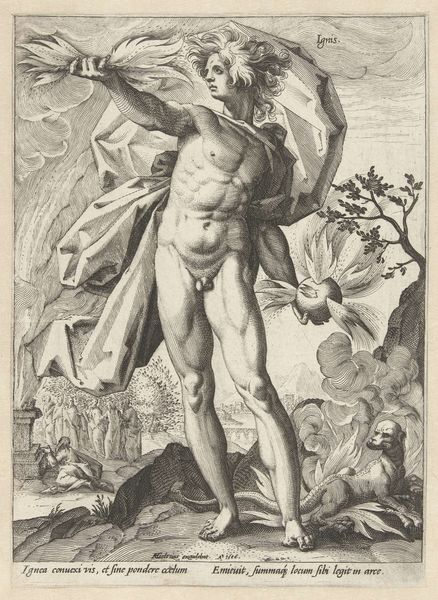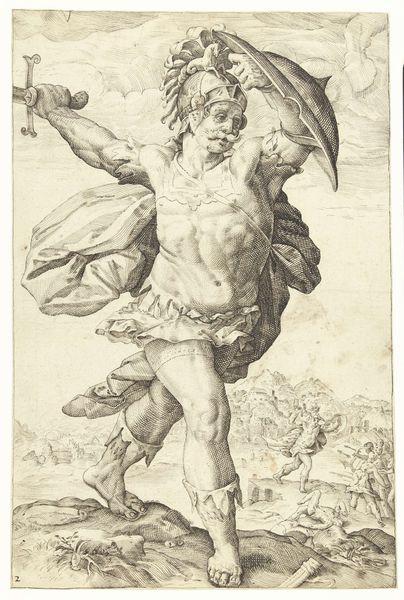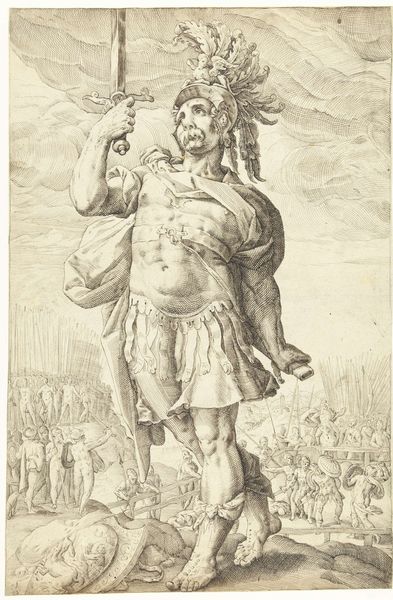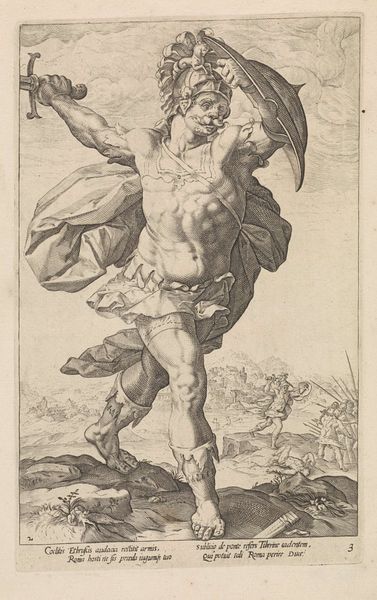
print, engraving
# print
#
mannerism
#
figuration
#
surrealism
#
history-painting
#
nude
#
engraving
Dimensions: 560 mm (height) x 397 mm (width) (bladmaal)
Hendrick Goltzius made this print, The Great Hercules, in the Netherlands, at the end of the 16th century. It’s a masterful display of the engraver’s art, full of the kind of exaggerated musculature that had become fashionable through Michelangelo. Hercules was a classical hero, famed for his strength and courage. But the image of Hercules was also undergoing a transformation during this period. Northern European artists began to depict Hercules as a symbol of civic virtue, his strength and courage now understood as the power to overcome tyranny and protect the innocent. Prints like this circulated widely, and played a key role in shaping public perceptions and political attitudes. The Hercules myth offered artists a way to comment on contemporary social structures. To better understand the print's cultural significance, we can consult emblem books and iconographic guides, tracing the evolution of the Hercules figure and its use in political discourse.
Comments
No comments
Be the first to comment and join the conversation on the ultimate creative platform.
